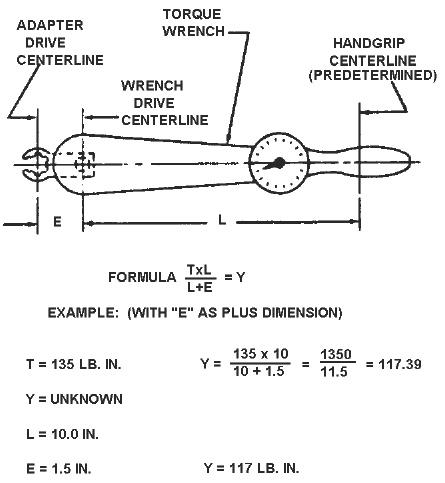Your torque wrench needs a force of X pounds at Y feet to produce a torque of X.Y lb-ft. Say your torque wrench handle is 1.5 ft from the centre of the drive bit to the centre of the handle. You then need a force of 80lb to produce a torque of 120 lb-ft. If you added a cheater handle to triple its length you need 80/3 =26.6 lb instead. But that's not what you need.
Instead of that, you move the drive bit onto an adaptor so that the centre of the torque wrench handle is now 3x that distance from the crank bolt. The same 80lb that makes the wrench read 120 lb-ft now is multiplied by 4.5 ft to produce a torque of 360 lb-ft. Measure the distance of the centre of the torque wrench handle to the drive centre as best you can. Tripling this distance gives you a simple 3x ratio that is easy to calculate but of course any other ratio would work too, just needs more calculating.




 Reply With Quote
Reply With Quote




Bookmarks